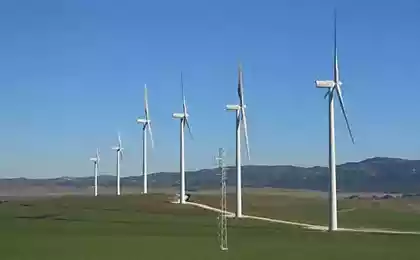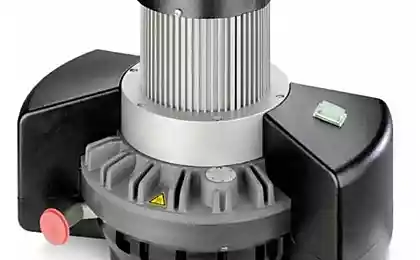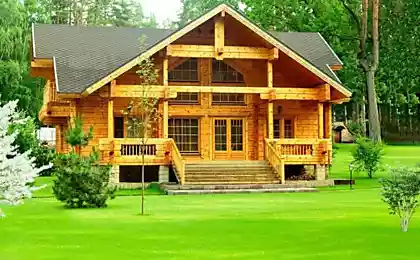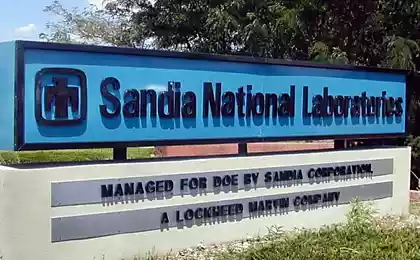2440
The vacuum solar collector.
In my previous topic often asked working principle of vacuum solar collector. This is decided by the rapid talk in a nutshell.
7 photo.

Optimal use of solar energy in our climate
Purpose of the solar collector - the conversion of solar energy into thermal energy. Given that the operation of the solar collector year-round, and life of 20 years, installing more than justified.
Typically, a solar collector works on the following principle: to provide the maximum hot water, and excess heat to give the main heating system running on a traditional heating equipment. Such collaboration allows during the cold season to reduce the load on the boiler heating up to 40-60%. How does a solar collector
Solar energy is captured through the vacuum tube collector. Design them like a thermos, a tube of safety glass that can withstand the impact of hail large diameter tube inserted into a smaller diameter. Between them, the vacuum that is perfect thermal insulation. The inner tube is coated with a special selective layer which absorbs solar energy as much as possible, and vacuum prevents heat loss. At the center of this design is a copper sealed tube that contains a small amount of low-boiling liquid. She serves as a heating element and a solar collector.
Figure 1. Vacuum tube solar collector

Under heat, the low-boiling fluid vaporized and vapor rise in its upper part - the tip where it is condensed and transmit heat to the primary circuit (antifreeze).
This tube is resistant to freezing and is able to operate down to -50 ° C. Evaporation of the liquid starts when the temperature inside the tube is 30 ° C. At lower temperatures, the tube "locked" and additionally retains heat. Such tubes are functioning and in cloudy weather and at subzero temperatures - they convert the direct and diffuse solar rays into heat.
Figure 2. Heat exchanger vacuum solar collector

Connecting a vacuum solar collector system
In turn, antifreeze that circulates through the heat exchanger of the solar collector is supplied to the circuit Cylinder (indirect heating boiler) through which hot water is heated until its use. In parallel, a boiler, an electric heater is installed so that if the temperature drops below the set (for example, due to prolonged cloudy weather) he donagreval water.
Figure 3. Wiring diagram of vacuum solar collectors

Choosing a solar collector, you provide yourself a cheap thermal energy from the sun, and high vacuum tubular solar collectors will help you do it. Solar Collectors, offered by our company - it's the perfect combination of price and quality, convenience and efficiency for heating, hot water and heating your home.
Solar collectors - this is another step towards your independence and energy security!
Options for installing solar collectors:
Figure 4. Installation of vacuum solar collectors on the facade of the house

Figure 5. Installation of vacuum solar collectors on the roof

Figure 6. Installation of vacuum solar collectors on earth
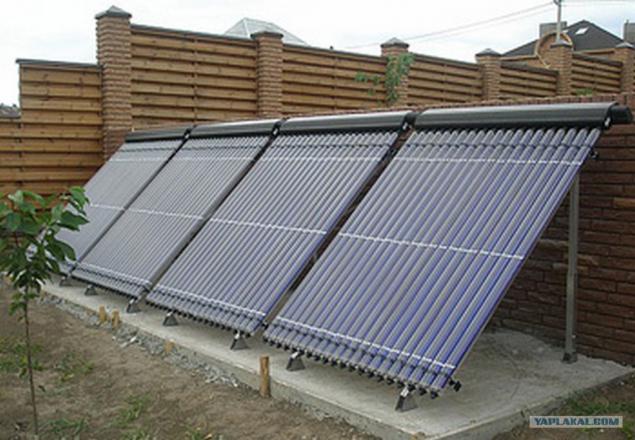
7 photo.

Optimal use of solar energy in our climate
Purpose of the solar collector - the conversion of solar energy into thermal energy. Given that the operation of the solar collector year-round, and life of 20 years, installing more than justified.
Typically, a solar collector works on the following principle: to provide the maximum hot water, and excess heat to give the main heating system running on a traditional heating equipment. Such collaboration allows during the cold season to reduce the load on the boiler heating up to 40-60%. How does a solar collector
Solar energy is captured through the vacuum tube collector. Design them like a thermos, a tube of safety glass that can withstand the impact of hail large diameter tube inserted into a smaller diameter. Between them, the vacuum that is perfect thermal insulation. The inner tube is coated with a special selective layer which absorbs solar energy as much as possible, and vacuum prevents heat loss. At the center of this design is a copper sealed tube that contains a small amount of low-boiling liquid. She serves as a heating element and a solar collector.
Figure 1. Vacuum tube solar collector

Under heat, the low-boiling fluid vaporized and vapor rise in its upper part - the tip where it is condensed and transmit heat to the primary circuit (antifreeze).
This tube is resistant to freezing and is able to operate down to -50 ° C. Evaporation of the liquid starts when the temperature inside the tube is 30 ° C. At lower temperatures, the tube "locked" and additionally retains heat. Such tubes are functioning and in cloudy weather and at subzero temperatures - they convert the direct and diffuse solar rays into heat.
Figure 2. Heat exchanger vacuum solar collector

Connecting a vacuum solar collector system
In turn, antifreeze that circulates through the heat exchanger of the solar collector is supplied to the circuit Cylinder (indirect heating boiler) through which hot water is heated until its use. In parallel, a boiler, an electric heater is installed so that if the temperature drops below the set (for example, due to prolonged cloudy weather) he donagreval water.
Figure 3. Wiring diagram of vacuum solar collectors

Choosing a solar collector, you provide yourself a cheap thermal energy from the sun, and high vacuum tubular solar collectors will help you do it. Solar Collectors, offered by our company - it's the perfect combination of price and quality, convenience and efficiency for heating, hot water and heating your home.
Solar collectors - this is another step towards your independence and energy security!
Options for installing solar collectors:
Figure 4. Installation of vacuum solar collectors on the facade of the house

Figure 5. Installation of vacuum solar collectors on the roof

Figure 6. Installation of vacuum solar collectors on earth















